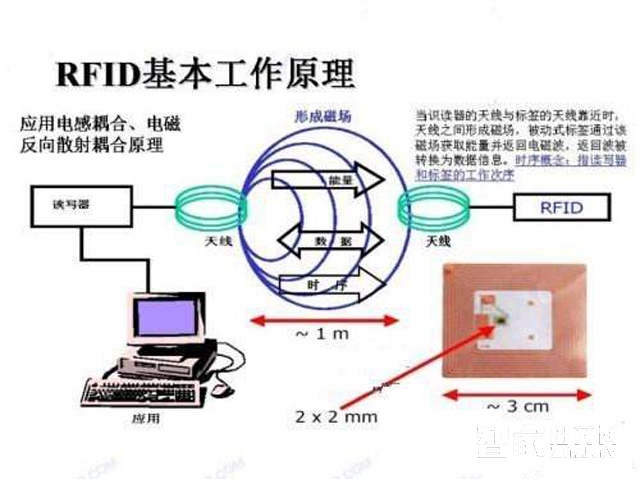In the last article, our editor provided an overview of the concept and fundamental structure of RFID technology. Today, we will continue to explore its working principles and key features, hoping to offer you further insights into this fascinating technology.
Smart Home Wireless Technology – Understanding RFID Radio Frequency Technology
1. How RFID Technology Works
The core operating mechanism of RFID technology is relatively straightforward. When an RFID tag enters the electromagnetic field created by a reader, it receives a radio frequency signal. By utilizing the energy from this signal, the tag either powers itself or transmits a response at a specific frequency. The reader then captures the transmitted data, decodes it, and forwards it to a central information system for processing. This seamless interaction enables RFID systems to function efficiently across various applications.

2. Performance Characteristics of RFID Technology
Data Storage: Unlike traditional tags, RFID tags offer significantly larger storage capacities. The data they hold can be updated in real-time, allowing for both reading and writing operations.
Speed and Efficiency: RFID systems outperform barcodes in terms of speed and flexibility. They do not require precise alignment for scanning and can recognize multiple targets simultaneously, even when in motion.
User-Friendly Design: RFID tags are compact and easily integrated into products. Their small size makes them ideal for embedding within materials without compromising functionality.
Security: Each RFID tag contains a unique chip with a distinct serial number, making it nearly impossible to replicate. This feature ensures robust security for sensitive applications.
Durability: Unlike mechanical devices, RFID tags are resistant to wear and tear, ensuring long-lasting performance under various environmental conditions.
Enhanced Sensing Capabilities: RFID technology surpasses conventional tagging methods in terms of accuracy and reliability.
Here, we’ve covered the basics of how RFID wireless radio frequency technology operates and highlighted its notable advantages. This technology plays a pivotal role in modern smart homes, powering innovations like access control systems and smart locks. As the demand for connected living spaces grows, RFID remains a vital component of today’s smart home ecosystem.
Related Content
Article: Smart Home Wireless Technology – An Introduction to RFID Radio Frequency Technology (1)
Recommended: Open a Smart Home Store | Explore the Future of Smart Wireless Homes
The TOPCon (Tunnel Oxide Passivated Contact) solar cell is a type of advanced photovoltaic technology used in solar panels. It's an evolution of the traditional silicon solar cell, specifically designed to improve efficiency and reduce costs. These monocrystalline panels use a thin layer of silicon dioxide (glass) and a metal oxide to create a passivating contact. This design allows for better light absorption and reduces electrical losses by preventing recombination of charge carriers. The tunneling effect allows electrons to move more freely from the N-type material to the metal contacts, improving the overall efficiency of the cell.
Advantages
1. Higher Efficiency: TOPCon technology can achieve efficiencies up to 24-25%, which is higher than most conventional mono-Si cells. This high efficiency translates into more power output per unit area, making them ideal for space-constrained applications.
2. Better Light Absorption: monocrystalline silicon solar panels are known for their ability to absorb light more effectively due to the absence of impurities in the material. This results in better performance under low-light conditions and during night times when solar irradiance is low.
3. Reduced Temperature Coefficient: As temperatures rise, the efficiency of solar cell panels typically decreases. TOPCon cells have a lower temperature coefficient, meaning they maintain their efficiency better at higher temperatures, thus delivering more consistent performance across various environmental conditions.
4. Enhanced Durability: These panels are designed with advanced materials and processes that enhance durability and reliability. They are less prone to degradation over time compared to some other technologies, leading to longer lifespan and maintenance-free operation.
5. Robust Performance: TOPCon technology allows for better performance in terms of both short-circuit current and open-circuit voltage, contributing to higher overall power output.
6. Advanced Contact Technology: The tunnel oxide passivation technique used in TOPCon helps in reducing the contact resistance between the cell and the metal grid, which increases the efficiency by allowing electrons to flow more freely.
Monocrystalline Silicon Solar Panels,580W Solar Panel,Monocrystalline Solar Cells 580W,Monocrystalline Panels
Ningbo Taiye Technology Co., Ltd. , https://www.tysolarpower.com